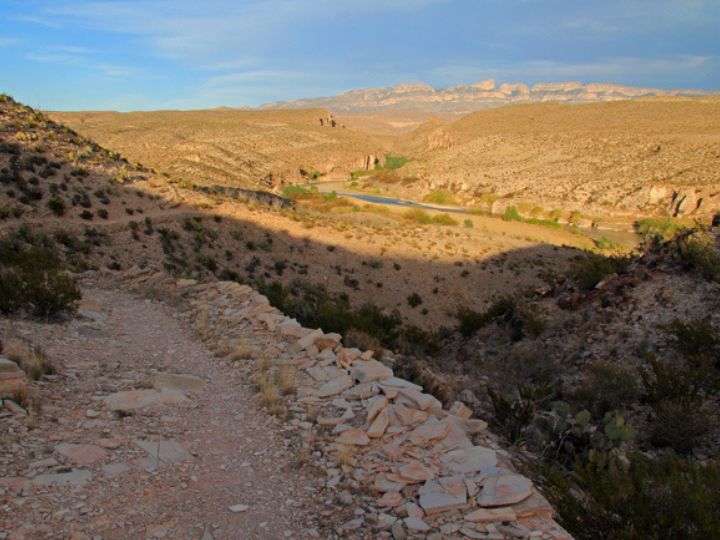

Researchers from five Texas universities, the University Land Office and the International Energy Agency jointly published a landmark study evaluating the potential of geothermal – the naturally occurring renewable energy harnessed from the heat emanating from the earth’s core – as an abundant clean energy source in Texas and its potential to scale globally over the coming decades.
The fifteen-chapter study, titled “The Future of Geothermal in Texas: The Coming Century of Growth & Prosperity in the Lone Star State,” includes analyses of the location and quality of Texas geothermal resources, evaluations of technology developments, the role of the oil and gas industry in achieving growth and scale, as well as environmental, regulatory, economic, and legal issues pertinent to the growth of the geothermal industry, both in Texas and globally.
Most importantly, it provides a scientific basis for informed decision-making as entities begin to consider the increased development of geothermal in Texas.
Collaborators include researchers from multiple research institutions across the State, including The University of Texas at Austin, Southern Methodist University, Rice University, Texas A&M University, and the University of Houston. The report is funded and supported by the Cynthia and George Mitchell Foundation, The Educational Foundation of America, and Project InnerSpace.
Current geothermal energy production is limited to places where, by chance, the right conditions – heat, permeability, and the presence of substantial amounts of water – naturally occur near the surface. But geothermal resources are literally everywhere beneath the surface, and research shows that new technologies and techniques can be leveraged to harvest this energy source anywhere in the world.
Texas and geothermal energy are a natural fit said Birol Dindoruk, the American Association of Drilling Engineers Endowed Professor in Petroleum, Chemical and Biomolecular Engineering at the University of Houston and one of the lead authors of the report.
“We have multiple opportunities that is direct function of the coherent ecosystem exists in Texas. We have been doing many of these drilling and extraction operations already in the oil industry and as well as through the existing geothermal businesses, which is not new,” said Dindoruk, who contributed to the first three chapters of the report that cover various concepts with unique applications in Texas. “Existing wells and other add on wells especially at geothermal sweet spots will generate opportunities in various ways – from diminishing costs to reducing emissions.”
According to the report, numerous geothermal startups have launched in Texas in recent years. Buoyed by oil and gas investments and primarily led by oil and gas industry veterans, these companies are moving quickly to demonstrate entirely new scalable geothermal concepts.
"Nabors views the geothermal opportunity as a possibility to repeat the scale and impact of unconventionals, but for decarbonized energy. Our investments, both internal and in our portfolio of startups, represent our commitment to innovating the future of energy while staying committed to our core competencies," noted Siggi Meissner, President, Energy Transition and Industrial Automation at Nabors Industries.
The increasing engagement of oil and gas entities in geothermal is both reflected in and explained by outcomes of the study. Authors report that oil and gas technology and knowledge transfer into geothermal is projected to deliver 20 to 43 percent in cost savings to geothermal, using existing technologies in use in the oil and gas industry today, and that nearly 70% of oil and gas entities engaged with the study reported that there are no geothermal related technical challenges that the oil and gas industry cannot solve.
“As an energy technology company, Baker Hughes has supported the geothermal sector for more than 40 years, providing technology and expertise for some of the world’s most innovative projects. Baker Hughes continues its strategic focus on new energy frontiers, including geothermal -- launching into the next 40 years and beyond,” said Ajit Menon, Baker Hughes Vice President for Geothermal.
Researchers in the study calculated multiple growth scenarios for geothermal development, both globally and in Texas, placed in the context of the scale of the oil and gas industry. They concluded that drilling 1.4 million wells globally between 2030 and 2050 could meet 77 percent of the world’s projected electricity demand, while enabling Texas to decarbonize 100 percent of its grid.
“The outcomes of this study are big - but so is the oil and gas industry - and the role of the industry is what has been the missing link in prior assessments about geothermal and its potential to scale,” noted Jamie Beard, Principal Investigator and Editor of the study. “To achieve the outcomes reported, we would need an Apollo-style mobilization of effort globally, but that is what climate change requires of us. We’ve done Apollo before - let’s do it again.”
Environmental and climate groups are increasingly engaging with geothermal as a potentially high-impact and fast path to global decarbonization. Clean Air Task Force, for example, launched a team focused on a type of deep geothermal called SuperHot Rock in 2022. “For too long, geothermal has been underestimated as a critical climate solution, noted Philip Ball, Chief of Geothermal Innovation at Clean Air Task Force. “Advanced, scalable geothermal concepts, like those discussed in this Report, can play a critical role in decarbonizing the global energy system and providing abundant carbon-free energy virtually everywhere in the world. It's time environmental groups recognize the opportunity geothermal presents and put themselves in a position to seize it.”
Geothermal sits in a rare political and social space in an increasingly polarized political and policy climate, where environmental and climate impact groups and oil and gas entities can get together and support the same cause.
“This geothermal study presents a rare opportunity in polarized debates about the future of energy where renewable energy proponents and the oil and gas industry can support the same cause,” said David Monsma of the Austin-based Cynthia and George Mitchell Foundation, a study funder. “It presents an overdue energy policy pathway toward increasing firm clean electricity that should bring everyone to the table.”
“The Future of Geothermal in Texas” will serve as a model for a program supported by Project InnerSpace to develop similar, state-specific geothermal roadmaps across the U.S. where there is current oil and gas industry engagement, and the presence of under-studied and overlooked geothermal resources. Projects in Idaho, Oklahoma, Louisiana, North Dakota, South Dakota, and Utah will launch in the first half of this year.
Collaboration – across disciplines and institutions – is key to a successful energy transition, Dindoruk said. He is particularly thankful for true collaborative relationships he shares with many, including the editors Beard and Bryant Jones, and especially Silviu Livescu, another lead author and associate professor at UT. Dindoruk and Livescu have published many papers together on geothermal energy and other complicated energy issues.
“We are facing complex problems now and future problems are going to be even more complex, especially in the area of energy, water and the environment,” Dindoruk said. “The solutions will require across-the-board collaboration. This report is just the start.”